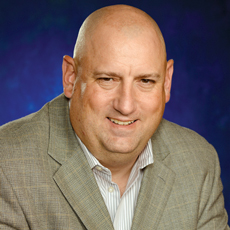
Recently there has been much debate as to the assisted living business model. Is it a real estate play where the emphasis is on the “Living” term or is it really a medical services model where the emphasis is on the “Assisted” term? As with most things in life, the answer lies somewhere in between. However, what is clear is what will be the dominant model for AL in the future and the challenges it will bring.
Assisted living is a booming industry that currently enjoys a premium payer mix with a relatively light regulatory overhang. Look for the construction cranes in any major market in the country and it is more likely than a coin toss that underneath will be some form of senior living development. The leading edge of the baby boomer tsunami is coming ashore and the first stop in long-term care is senior living. They are more educated than ever, have some level of personal assets intact and have high expectations for their experiences in long-term care.
While the AL market continues to roll, what is the determining factor with respect to the operational model employed in a given organization or community? A very prominent factor is clearly the structure of the value chain or the partnering model employed by the AL operator. In other words, where do all of those residents come from? Many AL operators simply market directly or indirectly to families and seniors to identify suitable prospects to drive occupancy. They are able to target and qualify prospects who meet their desired acuity levels and payer mix. This allows the operator to proactively determine its operating model focus (either real estate or medical services) and then fill the units accordingly.
However, an increasing number of operators are becoming part of larger diversified long-term care organizations or are entering into ACOs and other federated care models where they contract to accept a certain population and provide living and care services accordingly for a set fee and set terms. In these cases, the operating model focus is driven by the population management needs of the upstream entity and the resulting terms of the contracts or business relationships. So today, the degree of autonomy of the provider and the availability of a mix of acuity levels and payer types gives the operator some ability to choose whether it will operate a real estate-focused model or a medical services-focused model — at least in the short term.
Future factors
Will the ability of the AL operator to choose its operating model persist going forward? We need to look where the autonomy, acuity and payer factors are headed to answer that question. With respect to autonomy, we can look at the evolution of the acute and ambulatory care markets into fully integrated delivery networks. Just as there are virtually no “standalone” hospitals anymore, we will continue to see the pure-play operators in long-term care becoming directly or indirectly affiliated with diversified operators who can manage a population across the full spectrum of long-term care. Operational autonomy will continue to decline.
With respect to acuity, we have a senior population with increased life expectancies and multiple chronic conditions and co-morbidities. These seniors increasingly flow into the AL care setting from skilled nursing and home care due to cost, personal preference, and other factors. Acuity levels in AL will continue to rise.
With respect to payer mix, AL may be in the “roaring 20s” today, with a premium payer mix dominated by private pay. But the great depression is sure to follow. The average savings rate for seniors headed into retirement has been negative since the 2008 crisis. Many have depleted their nest eggs simply to avoid bankruptcy. While there will always be the affluent who can pay any price necessary for premium care, the average senior is not entering the long-term care system with sufficient assets to cover the cost of their care through their full life expectancy.
Hence, the role of the government as the payer of last resort will continue to grow in all of long-term care, including AL. The payer mix will continue to become increasingly challenging. These factors combined indicate that AL will increasingly employ a medical services model.
When will the majority of ALs transition to a medical services model? Recent data from the 2013 NCAL Performance Measure Survey gives us a strong clue:
• 94.9% of AL facilities have a nurse available 24 hours a day
• 68% have a nurse available onsite 24 hours a day
• Over 54% of direct caregiver staff hold a CNA, LPN, RN or other nursing designation
It is clear that the transition has already largely occurred and very few ALFs continue to operate in the traditional real estate model. This data seems to support the common statement today that “ALFs have become the SNFs of five years ago.”
Added concerns
This transition to the medical services model has many implications for AL operators. There are new legal implications, as the liability associated with providing even basic care services such as medication administration is considerably higher than that associated with simple living services. There are new regulatory implications that, while they may continue to be relatively light compared to a skilled nursing setting, also may vary widely from state to state and add significant complexity.
There are obvious operational implications, not the least of which is staffing profiles. In addition, EHR and care coordination technologies to document care and provide robust audit trails to manage regulatory and legal risks will have to integrate with primary care physicians, laboratories, pharmacies, family members, and others involved in the care extended team.
While the real estate model may largely be in the rearview mirror for AL operators, the great news is that this historical model has positioned operators well to succeed in a medical services model under the increasing use of capitated or shared risk reimbursement models. The strong focus on cost controls and operational metrics and the solid understanding of break-even points gives them a leg up on other care providers who have traditionally focused most of their energies on just the reimbursement part of the equation.
It is clear that the dominant operating model for AL will be a medical services model from here on out. The operators who will thrive have accepted this change and have begun to aggressively employ the necessary people, processes, and technology required for success in this new environment.




